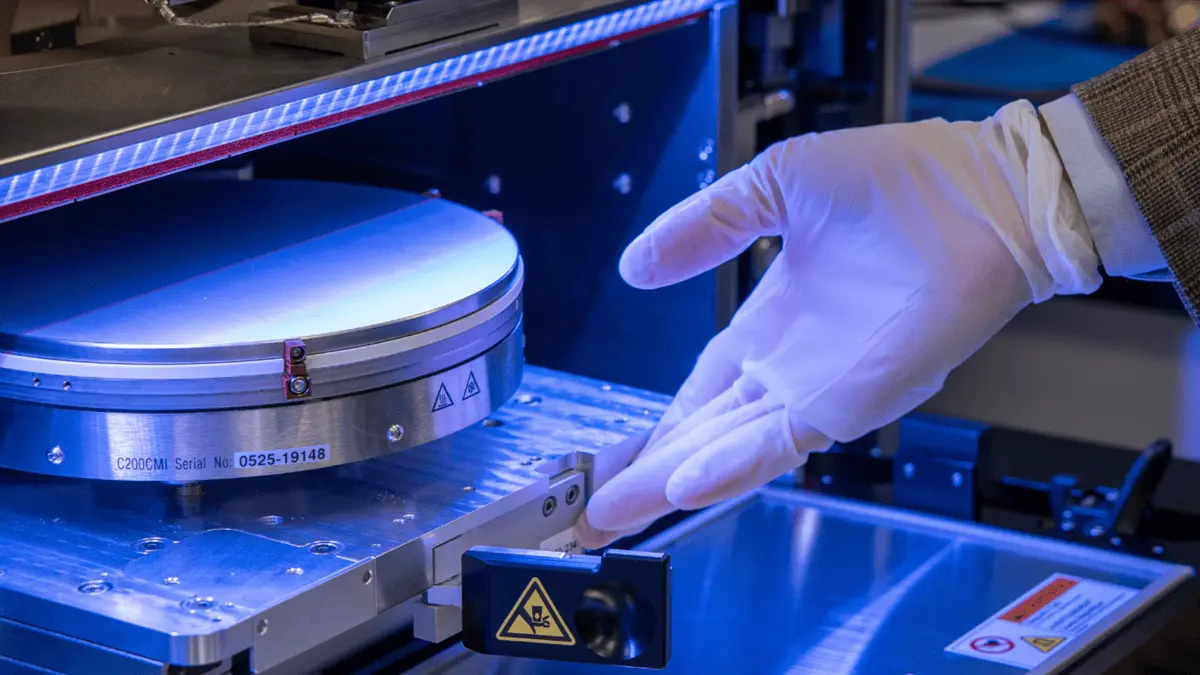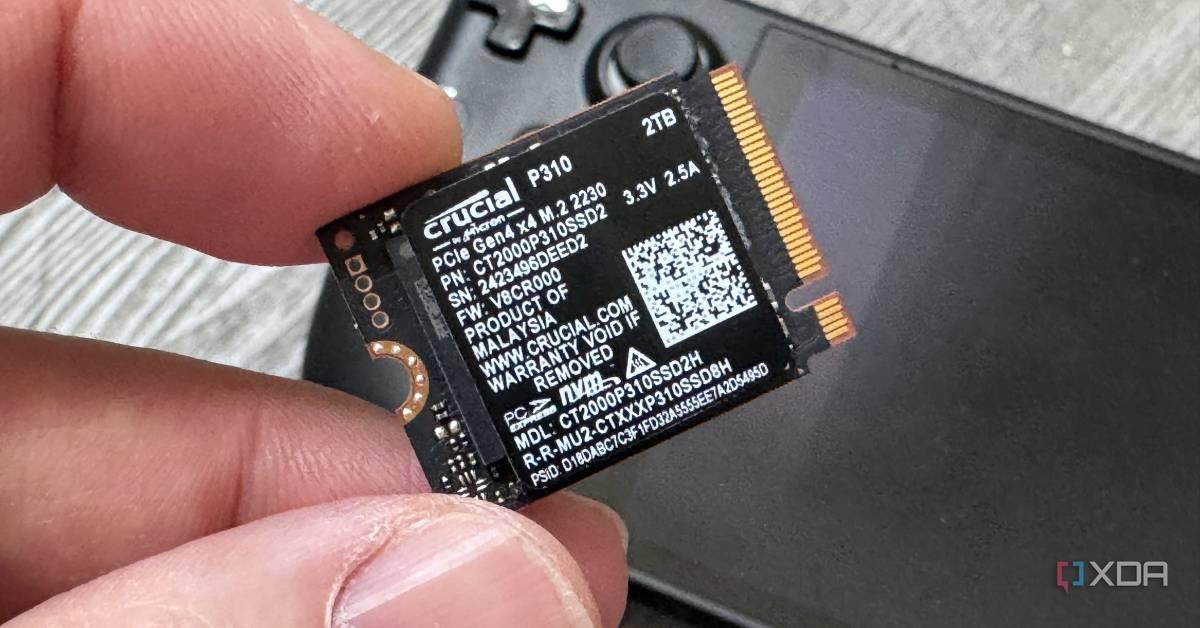Apple's M5 Chip Series: A Leap in AI-Ready Computing with Advanced Packaging
4 Sources
4 Sources
[1]
Apples next-gen M5 series processor leaks: TSMC N3P, server-grade SoIC advanced packaging
TL;DR: Apple's M5 series processors, using TSMC's N3P node, are in the prototyping phase, with mass production for M5, M5 Pro, M5 Max, and M5 Ultra expected in 2025 and 2026. These chips will feature server-grade SoIC packaging and separate CPU and GPU designs, enhancing production yields and thermal performance. Apple's PCC infrastructure will expand post-production, focusing on AI inferencing capabilities. Apple's next-generation M5 series processors are in the headlines, with rumors swirling that they'll use TSMC's advanced N3P process node, and server-grade SoIC advanced packaging. In a new post to X by insider Ming-Chi Kuo, we're learning that Apple's next-gen M5 series processors entered the prototyping phase "a few months ago" with the M5, M5 Pro, M5 Max, and M5 Ultra processors entering mass production in 1H25, 2H25, and 2026, respectively. Apple's new M5 Pro, M5 Max, and M5 Ultra chips will reportedly use server-grade SoIC packaging, with the iPhone giant to use 2.5D packaging called SoIC-mH (molding horizontal) to improve production yields and thermal performance, with separate CPU and GPU designs. Kuo continues, adding that Apple's PCC infrastructure build-out will accelerate after the mass production of the higher-rend M5 chips, which are better suited to AI inferencing. What's interesting here with the higher-end Apple M5 Pro, M5 Max, and M5 Ultra is the separate CPU and GPU design, which is a large change of the chip architecture, and will continue to give them the leading edge in the space. TSMC's new N3P node and 2.5D SoIC-mH advanced packaging are also something to watch unravel in 2025 when the new M5 series chips debut.
[2]
Apple's M5 chips will crush performance records
Apple is reportedly gearing up to revolutionize its chip offerings with the upcoming M5 series, according to analyst Ming-Chi Kuo. The new chips, expected to enter mass production in 2025, will be built on TSMC's advanced N3P process, promising improved energy efficiency and performance. "Apple M5 series chip 1. The M5 series chips will adopt TSMC's advanced N3P node, which entered the prototype phase a few months ago. M5, M5 Pro/Max, and M5 Ultra mass production is expected in 1H25, 2H25, and 2026, respectively. 2. The M5 Pro, Max, and Ultra will utilize server-grade SoIC packaging. Apple will use 2.5D packaging called SoIC-mH (molding horizontal) to improve production yields and thermal performance, featuring separate CPU and GPU designs. 3. Apple's PCC infrastructure build-out will accelerate after the mass production of the high-end M5 chips, better suited for AI inferencing." -Ming-Chi Kuo The M5 series includes the base model, M5, which will start production in the first half of 2025, followed by the M5 Pro and Max variants in the second half, and the M5 Ultra in 2026. This generational leap comes after Apple launched the M4 series, and Kuo asserts that consumers can expect a power draw reduction of 5 to 10% compared to the previous iteration. Additionally, the production process is anticipated to yield a performance improvement of around 5%. Central to the M5 Pro, Max, and Ultra chips is a state-of-the-art packaging design known as System-on-Integrated-Chips-Molding-Horizontal (SoIC-mH). This innovative approach allows for a 30-50% reduction in physical space compared to traditional chips, contributing to enhanced thermal performance and minimizing throttling. The separation of CPU and GPU designs is another significant shift, marking a departure from Apple's previous SoC methods that tightly integrated these components. With this architectural change, Kuo indicates substantial gains in overall performance, particularly for AI tasks. Manufacturing these chips at TSMC's N3P node enables Apple to utilize features that not only optimize power consumption but also improves production yields. Reports suggest that the M5 Pro chips will play a pivotal role in powering Apple's Private Cloud Compute (PCC) servers. This further extends the utility of the M5 series beyond consumer devices, signaling a strategic enhancement in Apple's computing capabilities. The implementation of the SoIC-mH package is a critical step forward, as this technology enhances thermal management, allowing these chips to perform efficiently for longer durations without overheating. Furthermore, this methodology is expected to lead to higher production yields due to a decline in chips failing quality checks during manufacturing.
[3]
Apple's M5 Pro chips could be "server-grade" because of one huge upgrade
Apple's powerful SoC -- "system on a chip" -- processors have been the source of its greatness for years, bringing incredible performance and long-lasting battery life to iPhones, iPads, and Macs because they use far less power processing everything we do on a laptop. However, with the premium M5-series chips, Apple might be shaking things up. According to reliable Apple analyst Ming-Chi Kuo, in a Medium post on Monday, Apple will utilize "server-grade SoIC [System-on-Integrated-Chip] packaging" in its M5 Pro, M5 Max, and M5 Ultra chips, excluding only the base M5 chip. More specifically, "Apple will use 2.5D packaging called SoIC-mH (molding horizontal)," which will feature "separate CPU and GPU designs" -- a significant change for Apple silicon. Kuo says this move is meant to "improve production yields and thermal performance," and it has the potential to make Apple's premium M5 chips soar above the competition if executed well. To expand on the rumor from Kuo, the System-on-a-Chip design was originally used by Apple (and has since been used in almost every chip found in an Apple device) because it prevented bottlenecked performance, thanks to all the processor's individual elements neatly packed into one chip. And yet, Apple is deviating from its highly successful chip construction in lieu of new SoIC-mH packaging that'll separate the CPU and GPU. In theory, as long as the M5 CPU and M5 GPU are equally matched, there shouldn't be any bottleneck issues. And with the use of TSMC's latest advanced N3P node, or the third-generation 3nm process, M5 Pro-powered devices and up will most likely perform better than any we've seen so far. Kuo also believes M5 chips will soon power Apple Intelligence via the company's Private Cloud Compute (PCC) servers. He estimates, "Apple's PCC infrastructure build-out will accelerate after the mass production of the high-end M5 chips," which will replace the existing M2 Ultra chips powering servers. He says the M5 chips are "better suited for AI inferencing." With much stronger, AI-focused chips powering Apple's servers, Apple Intelligence may gain more attractive features and be able to carry out tasks faster and with more reliability. Furthermore, Kuo even provides a few estimated production dates for us. He expects the base M5 chip to begin mass production in the first half of 2025, the M5 Pro and M5 Max chips to start production in the second half of 2025, and finally, the M5 Ultra's production to begin sometime in 2026. These production estimates align with how the M4-series chips have rolled out this year, which means we could see Apple's first M5-powered MacBook in October 2025.
[4]
The M5 chip will be a huge change -- and it's coming in 2025
We're still in the middle of the rollout of Apple's M4 chips, but today we got our first big peek at its successor, the M5. The report comes from reliable analyst Ming-Chi Kuo, who posted on X today and spilled some juicy technical details about what's coming. The M5 family of chips will be manufactured on TSMC's N3P node, the next step up from the N3E on the M4. Kuo says the new node "entered the prototype phase a few months ago," but it's the first time we're getting three generations of chips in a row that use the 3nm node. Recommended Videos The M5 Pro, Max, and Ultra, specifically, will use "server-grade" 2.5D packaging, with the explicit purpose of improving production yields and thermal performance. This will allow the CPU and GPU to use separate designs, which is a major change from previous generations that use a conventional system on chip. Kuo also mentions that these high-end M5 chips will be "better suited" for AI inferencing. Apple M5 series chip 1. The M5 series chips will adopt TSMC's advanced N3P node, which entered the prototype phase a few months ago. M5, M5 Pro/Max, and M5 Ultra mass production is expected in 1H25, 2H25, and 2026, respectively. 2. The M5 Pro, Max, and Ultra will utilize... https://t.co/XIWHx5B2Cy — 郭明錤 (Ming-Chi Kuo) (@mingchikuo) December 23, 2024 There's a lot we don't know about in terms of exactly how these changes will affect the end product, but clearly, Apple is giving its higher-end chips some new capabilities and features The timeline provided by Kuo doesn't deviate from previous generations, with the M5 kicking things off in the first half of 2025, followed by the M5 Pro/Max in the second half. Lastly, the M5 Ultra is scheduled for 2026. This would return the most powerful Mac desktops to a yearly update cycle after having skipped the M3 Ultra. We're still waiting on the M4 Ultra, of course, which is scheduled to pop up in a refreshed Mac Studio and Mac Pro sometime in 2025.
Share
Share
Copy Link
Apple's upcoming M5 chip series, set for production in 2025-2026, promises significant advancements in AI capabilities and performance through innovative packaging and separate CPU-GPU designs.

Apple's Next-Gen M5 Series: A Technological Leap
Apple is poised to revolutionize its chip offerings with the upcoming M5 series, according to renowned analyst Ming-Chi Kuo. Set to enter mass production between 2025 and 2026, these chips promise significant advancements in performance, energy efficiency, and AI capabilities
1
.Advanced Manufacturing Process
The M5 series will be built on TSMC's cutting-edge N3P process node, a third-generation 3nm technology. This advanced manufacturing process is expected to yield a 5-10% reduction in power consumption compared to its predecessor, coupled with a 5% performance improvement
2
.Innovative Packaging and Design
In a significant departure from previous designs, the M5 Pro, M5 Max, and M5 Ultra chips will utilize server-grade System-on-Integrated-Chips (SoIC) packaging. Apple plans to implement a 2.5D packaging technique called SoIC-mH (molding horizontal), which aims to enhance production yields and thermal performance
3
.Perhaps the most notable change is the separation of CPU and GPU designs, marking a significant shift from Apple's traditional System-on-Chip (SoC) architecture. This new approach could lead to substantial gains in overall performance, particularly for AI-related tasks
1
.Production Timeline and Variants
The M5 chip family is expected to follow a staggered release schedule:
- Base M5: Mass production in the first half of 2025
- M5 Pro and M5 Max: Second half of 2025
- M5 Ultra: 2026
This timeline suggests we might see the first M5-powered MacBook as early as October 2025
2
.Related Stories
AI and Server Applications
The M5 series is positioned to play a crucial role in Apple's AI strategy. Kuo suggests that these chips, particularly the higher-end variants, are better suited for AI inferencing. This aligns with Apple's plans to expand its Private Cloud Compute (PCC) infrastructure, which is expected to accelerate following the mass production of high-end M5 chips
4
.Implications for Apple's Ecosystem
The advancements in the M5 series could have far-reaching effects across Apple's product line. The improved thermal performance and efficiency may lead to more powerful, yet cooler-running devices. Additionally, the enhanced AI capabilities could pave the way for more advanced on-device AI features in future Macs, potentially revolutionizing user experiences and applications
2
.As Apple continues to push the boundaries of chip design and manufacturing, the M5 series represents a significant step forward in the company's quest for technological leadership in the personal computing and AI spaces.
References
Summarized by
Navi
[1]
[2]
[4]
Related Stories
Recent Highlights
1
OpenAI releases GPT-5.2 AI model after code red memo targets Google's Gemini 3 threat
Technology

2
Disney invests $1 billion in OpenAI, licenses 200+ characters for Sora AI video generator
Technology

3
OpenAI faces wrongful death lawsuit after ChatGPT allegedly fueled murder-suicide tragedy
Policy and Regulation








